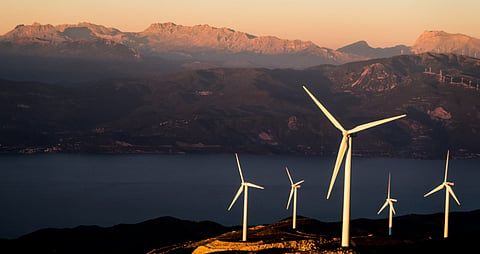Supervisory Body on Carbon Markets Achieves Important Progress
The Supervisory Body overseeing the Article 6.4 mechanism established by the Paris Agreement achieved important progress at its second meeting last week.
It agreed on several recommendations to the Conference of the Parties serving as the meeting of the Parties to the Paris Agreement (CMA), all of which denote a strong commitment to ensuring a high quality and swift Article 6.4 mechanism delivery.
Through these recommendations, the Supervisory Body confirms its intention to provide a new standard for international carbon markets dedicated to enable enhanced mitigation and adaptation.
Ms Kristin Qui, Chair of the Supervisory Body, said: “It was a productive meeting. We are up against very tight timelines and I am glad to see my peers’ dedication to delivering a robust mechanism, aligned on the values of the Paris Agreement.
"The Paris Agreement is an inclusive instrument, and the Article 6.4 mechanism is an integrant part of it: To serve the central temperature goal, we must ALL act now.
"This mechanism needs to be available to all, and to deliver, for all. The severity of the task at hand cannot be ignored, but this is what we are all fully committed to.”
Share of proceeds
After due consideration on the structure and appropriate levels of the share of proceeds (a levy charged to activities that will register under the article 6.4 mechanism to recover administrative expenses), the Supervisory Body agreed on a recommendation to the CMA on the types of fees to be applied as well as appropriate caps for each fee.
Indian Couple Create Magic, Cultivate Rice Paddies in the Desert
This flexibility aims to ensure a sound operation of the mechanism, all the while guaranteeing fair access to the mechanism for all stakeholders.
In addition, the Supervisory Body agreed on the level of a monetary contribution from individual activities to the Adaptation Fund and on the modalities of an additional periodic contribution from remaining funds, to further support developing countries in their adaptation efforts.
Methodologies and activities involving removals
Work undertaken by the Supervisory Body seeks to assist Parties to use the mechanism to implement their nationally determined contributions.
The Supervisory Body will provide a tool that will allow for higher ambition in Parties’ mitigation and adaptation actions and that will promote sustainable development and environmental integrity.
At the center of the mechanism’s infrastructure stands the work relating to methodologies and activities involving carbon removals, on which the environmental integrity of the activities will rest.
It is therefore essential that this work be allocated sufficient time to ensure robust and credible recommendations to the CMA.
The Supervisory Body, committed to transparency and inclusivity, decided to open two calls for input on a series of published documents.
The issues contained in these documents pertain to methodological and removal related work mandated by the CMA through its decision “3/CMA.3”: receiving stakeholders’ feedback will support the crafting of recommendations to forward to the CMA, taking into account a broad range of views and analyses.
The two calls relate specifically to the development and assessment of methodologies, and removal activities under the Article 6.4 mechanism. The Supervisory Body will consider these matters at the next meeting in November in Sharm el-Sheikh, Egypt.
Demonstrating the urgency with which it is trying to advance its work, the Supervisory Body will continue its consideration of these questions in the format of informal working groups before the November meeting.
Workplan
The Supervisory Body also approved its workplan until the end of 2023. The document provides a roadmap on how the Supervisory Body intends to operationalize the Article 6.4 mechanism and is a signal of the Body’s commitment to deliver it swiftly.
Furthermore, it not only supports the supervisory body in its organization of work, but also supports the planning of stakeholders and Parties willing to engage in the mechanism.
Supervisory Body support structure
In light of the workload ahead, the Supervisory Body led discussions regarding its support structure and is currently considering establishing a roster and the possibility of calling for experts in the near future. Inclusivity and diversity will be key criteria, should such a structure be agreed on.
Looking forward
The next meeting of the Supervisory Body will take place from 3–5 November in Sharm el-Sheikh, on the margins of the UN Climate Change Conference (COP 27). The meeting will be open to observers.
Documents to be considered, including the Supervisory Body’s annual report to the CMA, will be published on 20 October and will be open for public comments. Finally, it was agreed to organize a side-event during COP 27, on 9 November.
Read More: 5 Key Benefits of Oysters for The Ecosystem


